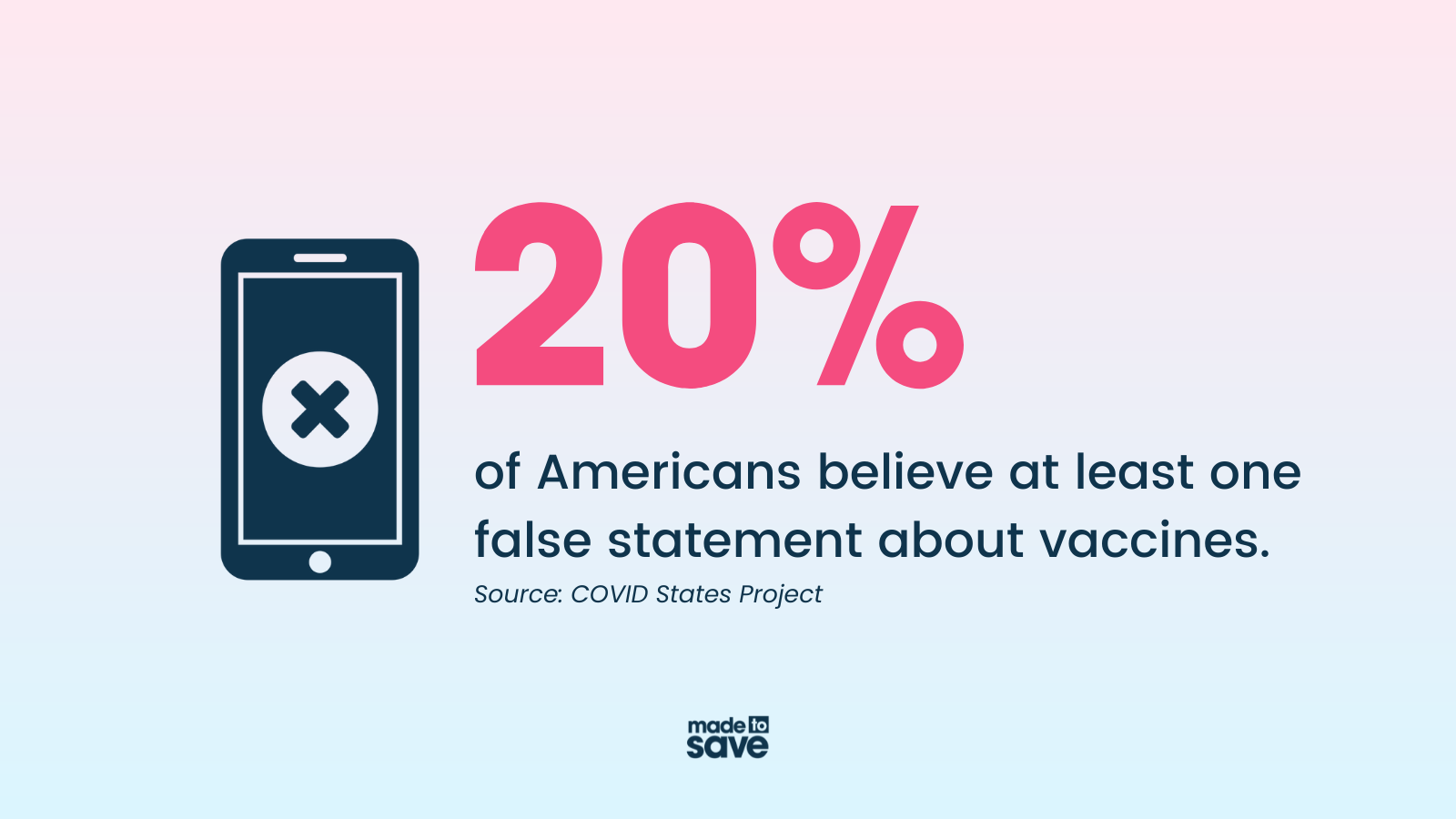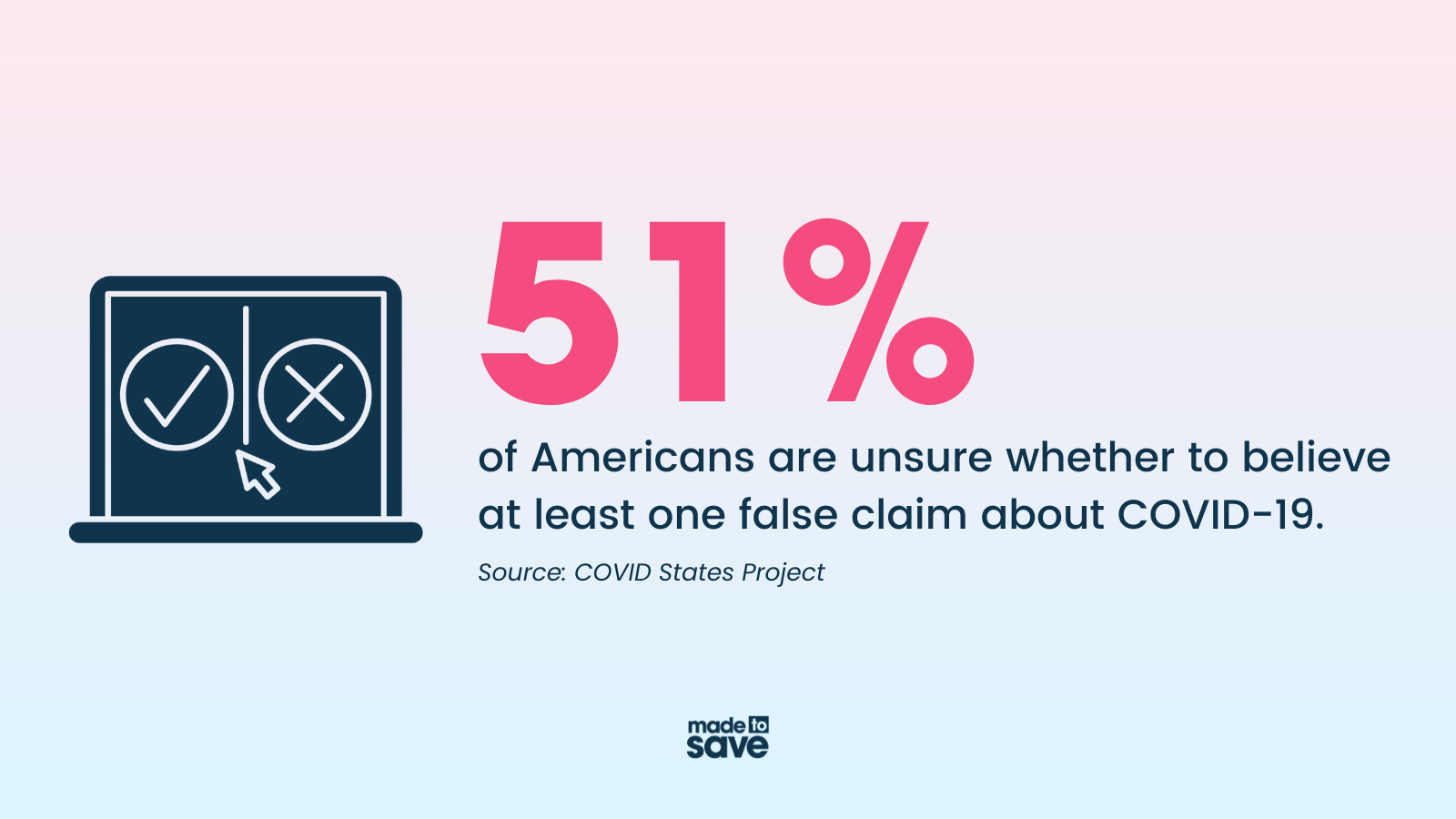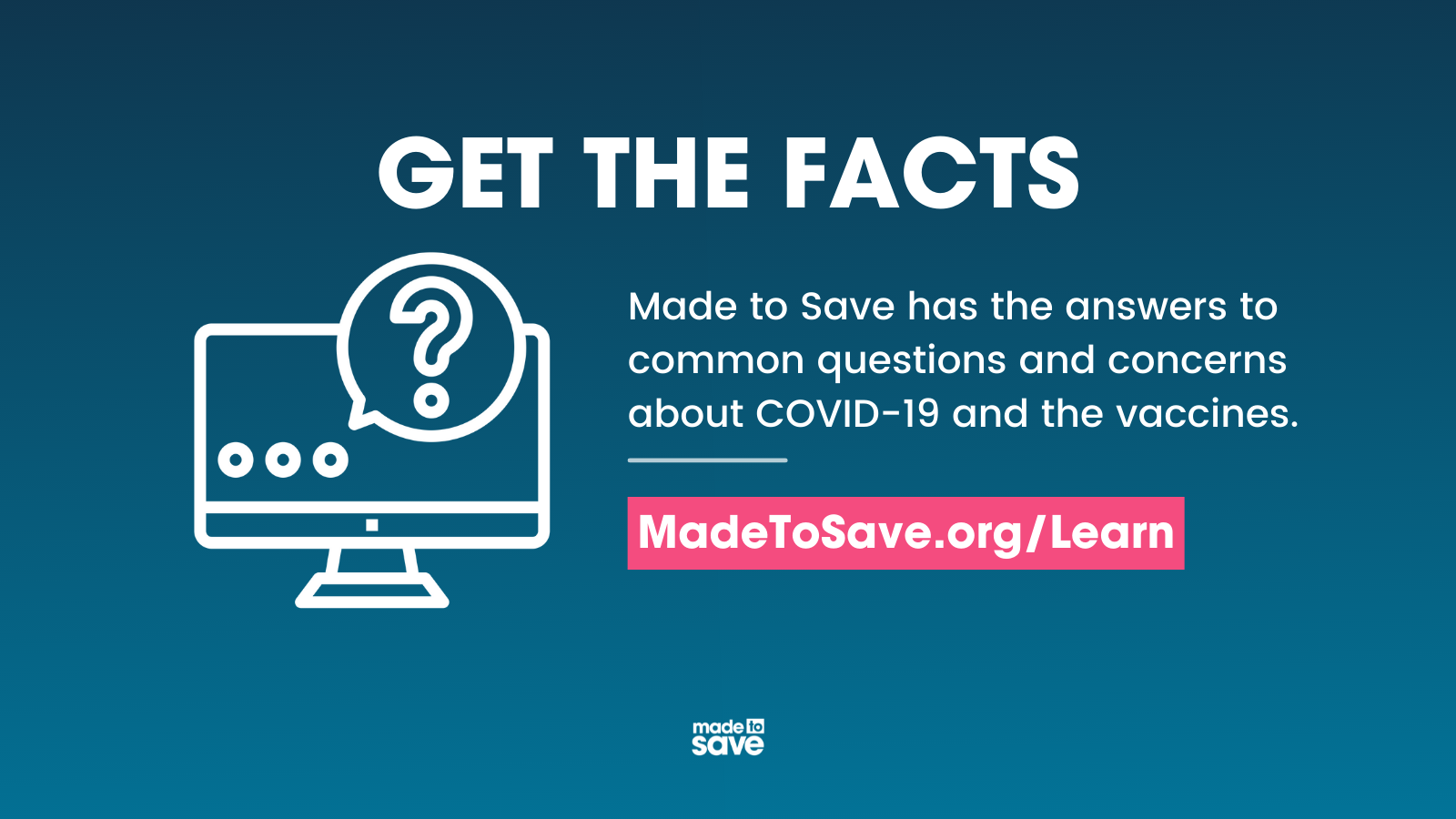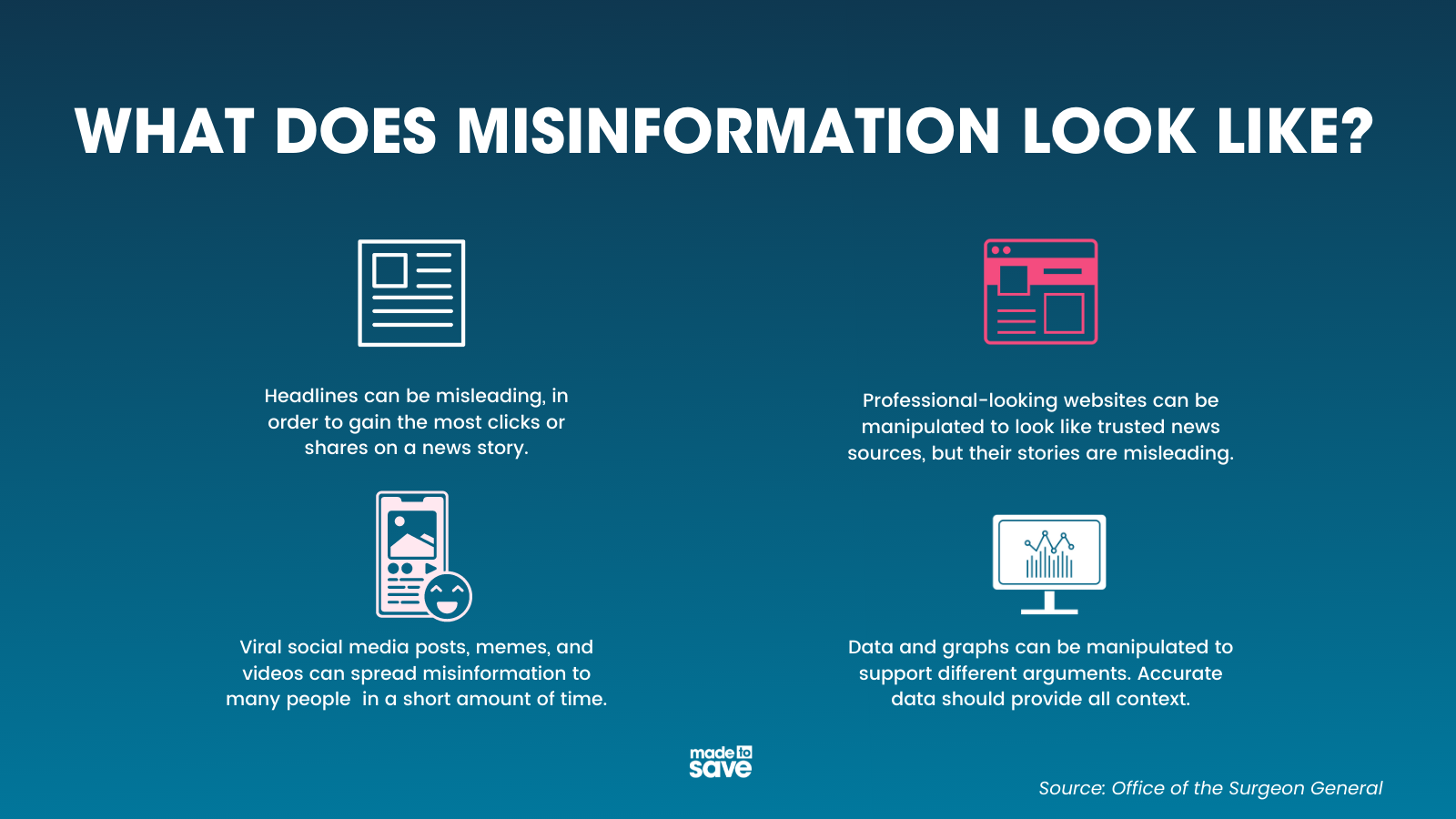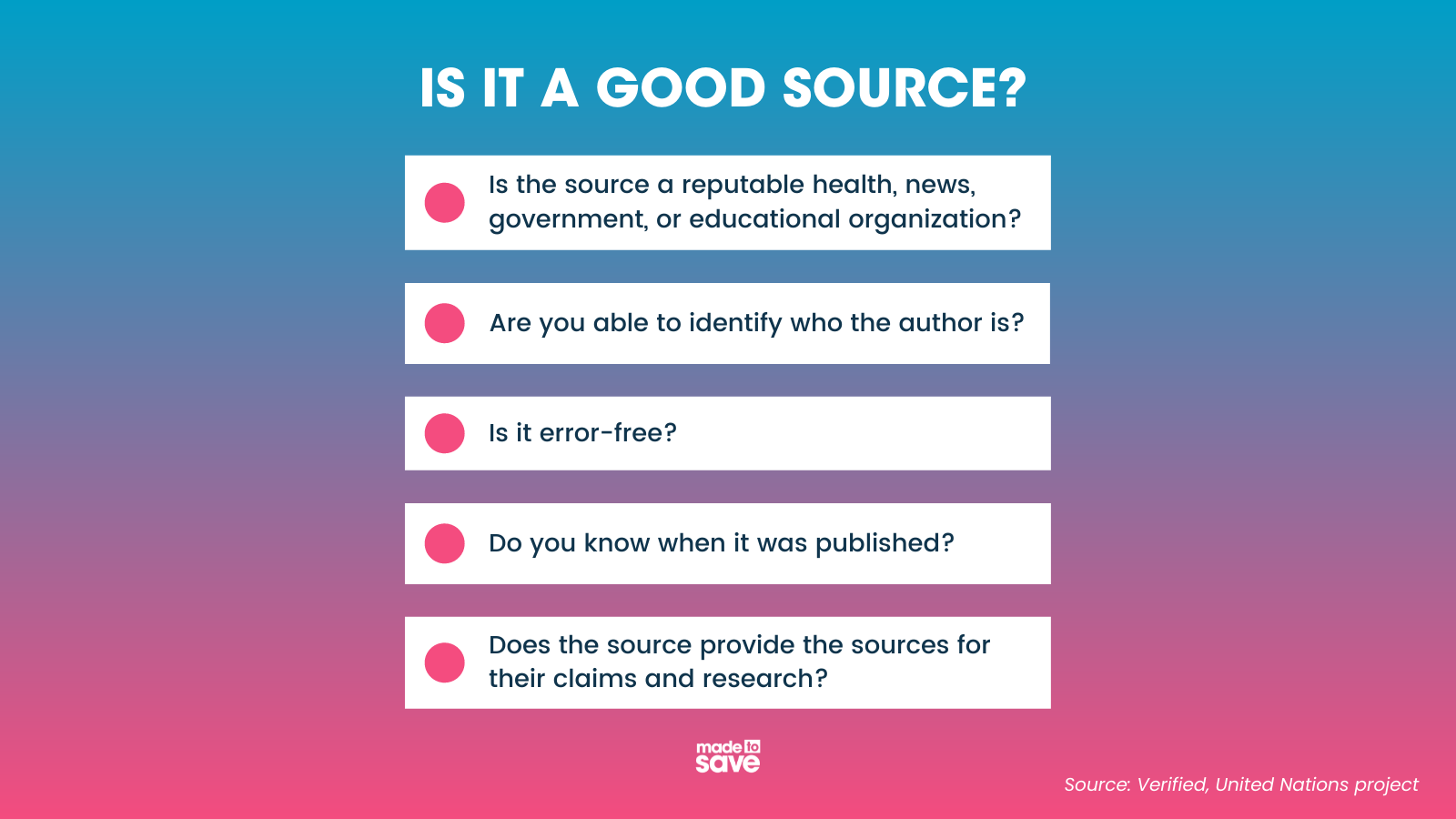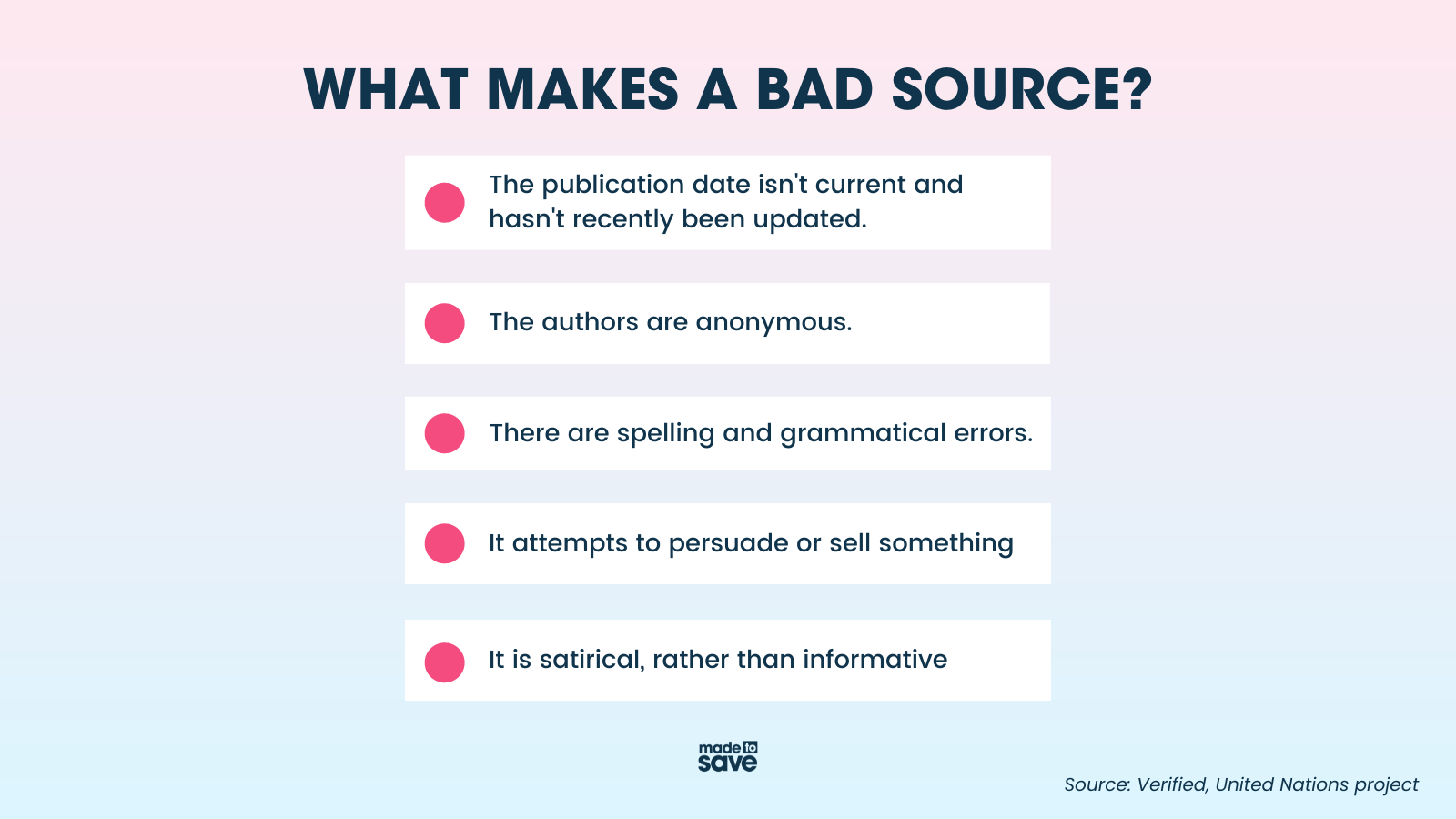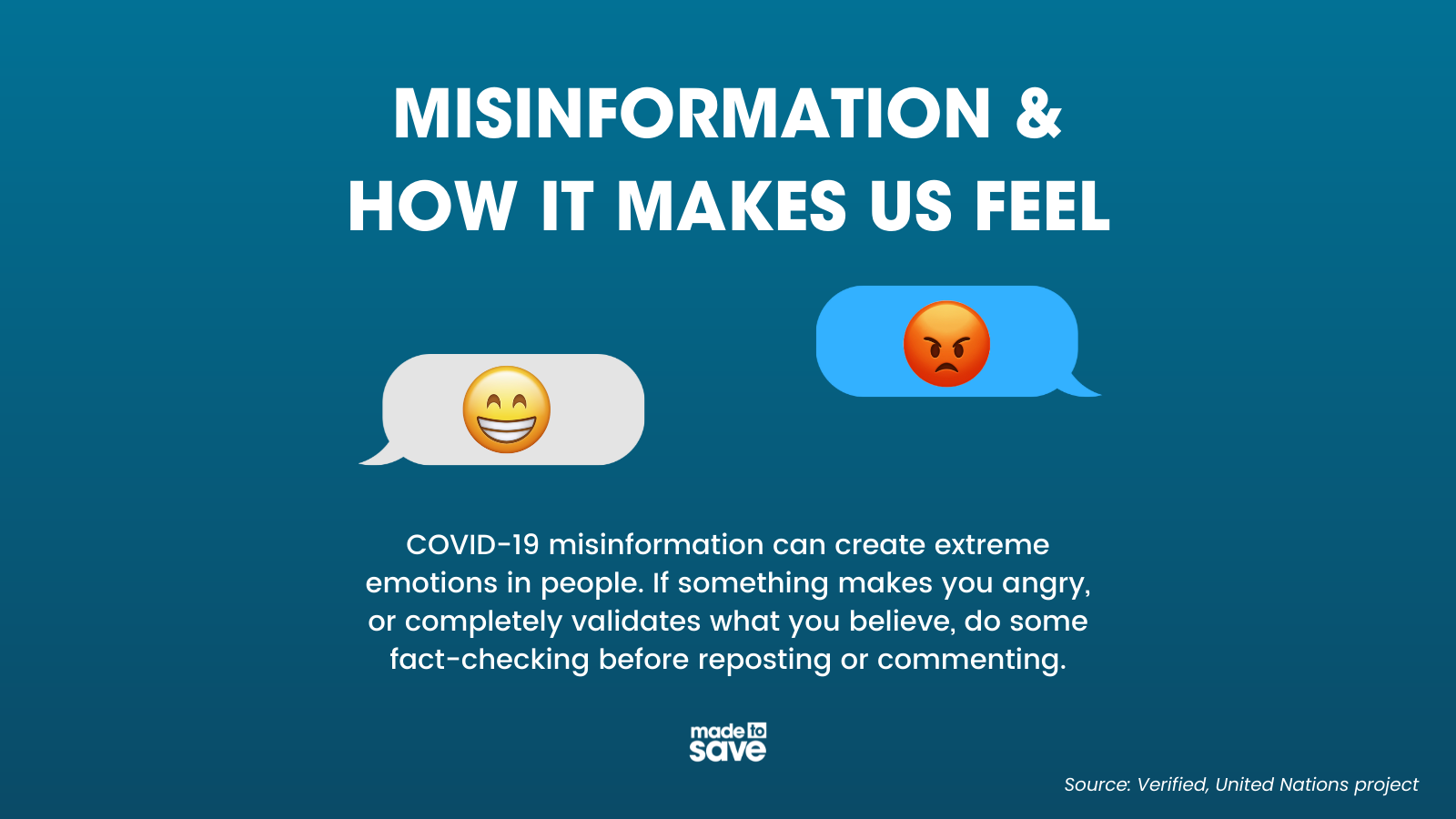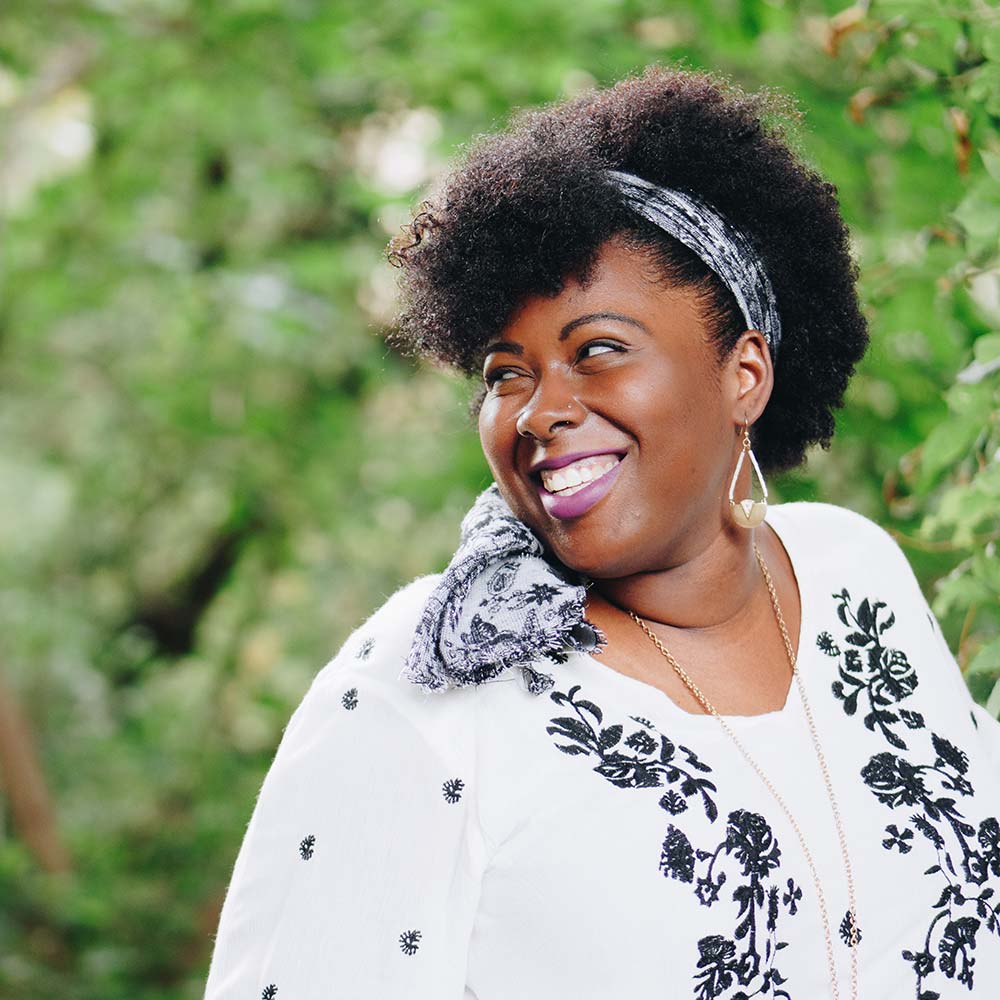Misinformation Digital Toolkit
Overview
Despite many states lifting COVID-19 restrictions, large numbers of the American population have yet to receive their COVID-19 vaccines. This indecision about getting vaccinated is partly due to mis- and dis- information campaigns seen throughout the pandemic.
How can we work to stop the spread of COVID-19 misinformation? The best place to start is in your own communities: online and off. You are the best advocate to help your friends, family, and community get vaccinated against COVID-19. This toolkit was created to help you: (1) identify accurate sources for up-to-date COVID-19 information, (2) identify possible misinformation and disinformation, and, (3) encourage your loved ones to get their COVID-19 vaccines.
While new variants may arise, and COVID-19 statistics may change, the facts remain the same: the COVID-19 vaccines are the best way to prevent severe illness, hospitalization, and death.
To learn more about COVID-19 and the vaccines, visit MadeToSave.org/Learn.
Table of Contents
Social Media Posts + Graphics
COPY: People are more likely to get vaccinated if they know someone who has received their COVID-19 vaccines. @ItsMadeToSave has compiled a list of answers to your questions about COVID-19 and the vaccines to help in your outreach conversations. Visit: MadeToSave.org/Learn.
Download Square Image (FB/IG) here.
Download Rectangle Image (TW) here.
COPY: COVID-19 disinformation negatively affects vaccination rates. To learn more about how you can combat dis- and misinformation in your communities, visit: https://www.cdc.gov/vaccines/covid-19/health-departments/addressing-vaccine-misinformation.html
Download Square Image (FB/IG) here.
Download Rectangle Image (TW) here.
COPY: .@ItsMadetoSave put together a library of free resources from partners about COVID-19 and the vaccines on their website. To learn more, visit: MadetoSave.org/Resources.
Download Square Image (FB/IG) here.
Download Rectangle Image (TW) here.
COPY: Need a place to go when you have questions about COVID-19? Check out @ItsMadeToSave’s free tool that answers common questions about the virus, variants, and the vaccines. MadeToSave.org/Learn.
Download Square Image (FB/IG) here.
Download Rectangle Image (TW) here.
COPY: Misinformation and disinformation have been key terms throughout the pandemic. But what do they actually mean and what’s the difference?
Download Square Image (FB/IG) here.
Download Rectangle Image (TW) here.
COPY: We are exposed to misinformation every day – which makes it difficult to find accurate information about COVID-19. To get the facts, visit MadeToSave.org/Learn.
Download Square Image (FB/IG) here.
Download Rectangle Image (TW) here.
COPY: With so much COVID-19 misinformation online, we each have a responsibility to prevent the spread of COVID-19 and vaccine hesitancy. This checklist from @ItsMadeToSave was created to help you determine if a source is worth sharing.
Download Square Image (FB/IG) here.
Download Rectangle Image (TW) here.
Download Square Image (FB/IG) here.
Download Rectangle Image (TW) here.
COPY: COVID-19 misinformation can be hard to spot, but one way to check is by how you react. Do you feel extremely angry or shocked? Reaffirmed in your beliefs? If so, check to see if other valid sources are making similar claims before sharing online.
Download Square Image (FB/IG) here.
Download Rectangle Image (TW) here.
COPY: Misinformation can come in all forms of digital content. Here are some quick tips for resharing COVID-19 information online:
✅ Check your sources
✅ Read beyond the headlines
✅ Verify the facts with government and health organizations
COPY: Disagreeing with a new piece of COVID-19 news does not mean that it’s misinformation.
❌ Misinformation is information believed to be true, but is incorrect.
❌ Disinformation is a type of misinformation, with a goal to deceive.
COPY: Before sharing information about COVID-19, make sure that your sources don’t have these red flags:
🚩 Spelling errors
🚩 Anonymous authors
🚩 Out-of-date information
🚩 Based on opinion, not fact
How to Talk to Friends and Family
Did you know that people are more likely to get vaccinated if they know someone who has received the vaccines? That’s right. You are the most important advocate for the COVID-19 vaccines to your friends, family, and community. In this section, we share the best practices to help you in your outreach conversations.
Step One: Build Trust
- Listen to understand, not to respond.
- Confirm your understanding by repeating back or state a summary.
- Pair shared values with key facts.
- Share your vaccine story: what hesitations or questions did you have before getting vaccinated? Why did you decide to get the vaccines?
Step Two: Express Empathy
- Validate their concerns, express empathy, and demonstrate that you understand. In doing so, you will help make the person feel more comfortable.
- Ask questions to get to the root of the concern.
- Respond without judgment and avoid making assumptions.
Step Three: Help your friends and family conduct their own research
- What is holding them back from getting vaccinated? Do they need help accessing them? Do they need information? Do they need help making an appointment? Do they need a ride?
- Help the person find their own reason to get vaccinated.
- Don’t tell them what to do or think.
Below are more resources that can provide you with more tips for how you can encourage others to get vaccinated against COVID-19.
- Talking to Friends and Family about the COVID-19 Vaccine
- How to Talk to Your Friends and Family about the COVID-19 Vaccine: Youth Edition
- Guidelines for having vaccine conversations: the TEO Method
To Tweet or Not to Tweet?
Let’s test your ability to spot potential forms of misinformation. In the following section, the examples used are entirely fictional, and are only used to provide examples of good and bad sources.
For this activity, the characters are living through a zombie apocalypse. With the sample tweets provided, ask yourself: Is this tweet a good or bad source? Who is the author? Does the author have any authority? What biases might they have? And should I share this information with others?
Hypothetically, this would be a good source. Before sharing with others, take the time to read the linked article to verify the information in the tweet.
Sadly, Alice’s tweet is not a good source. We don’t know what authority she has to claim such information. She also appears to have some bias for rabbit holes. And, she spelled apocalypse wrong. If the information was coming from an accurate source, there would be an extensive review process that would’ve caught the error.
Despite coming from a trustworthy source, the tweet is sharing parts of an opinion piece. Opinion and commentary does not mean that the information is true.
In this case, Frankenstein’s tweet appears to be made up news. What authority does he have? What are his sources? Without knowing these key points, err on the side of caution and don’t reshare. Double check to see if trustworthy news organizations are reporting the same information.
